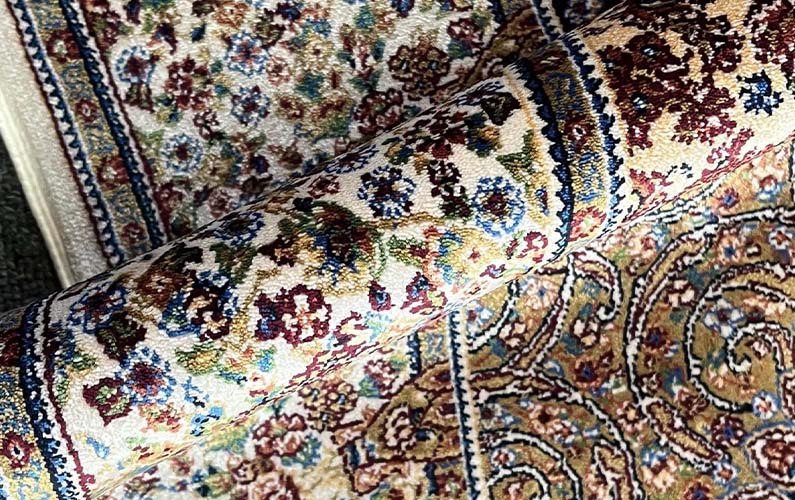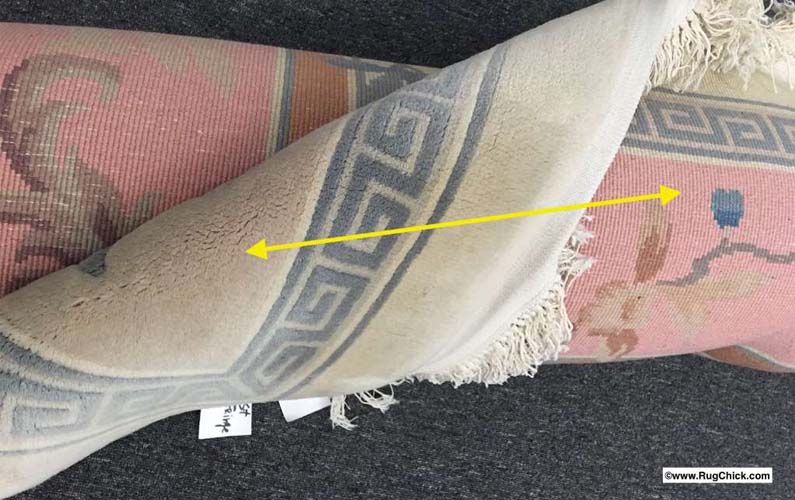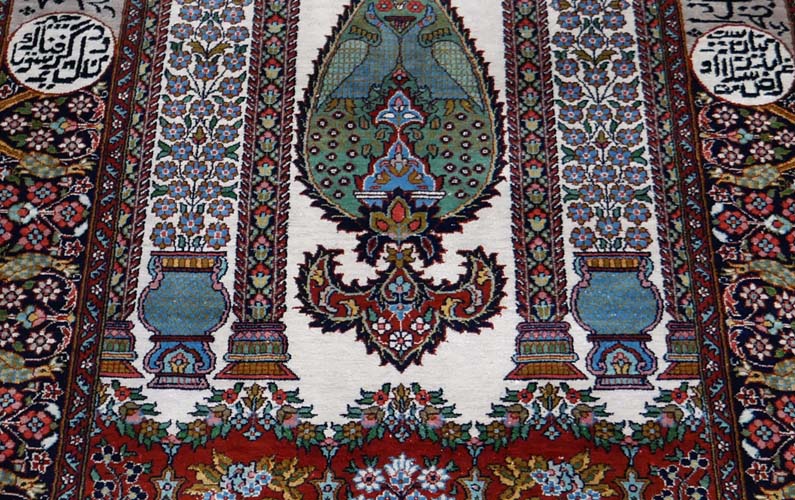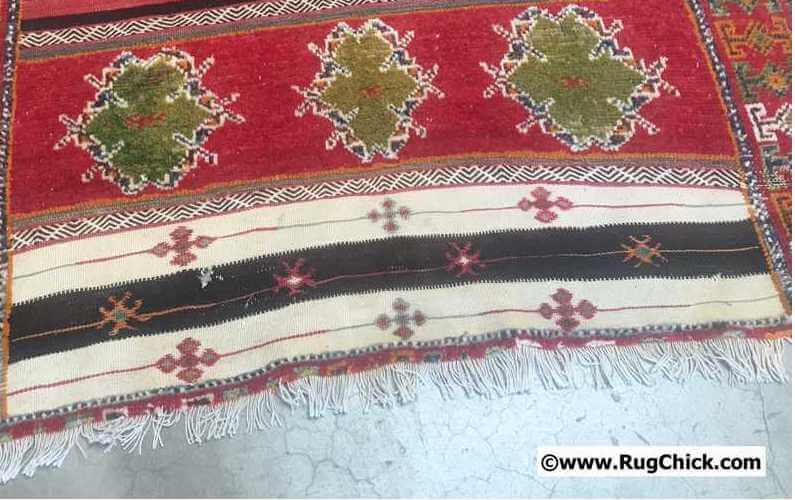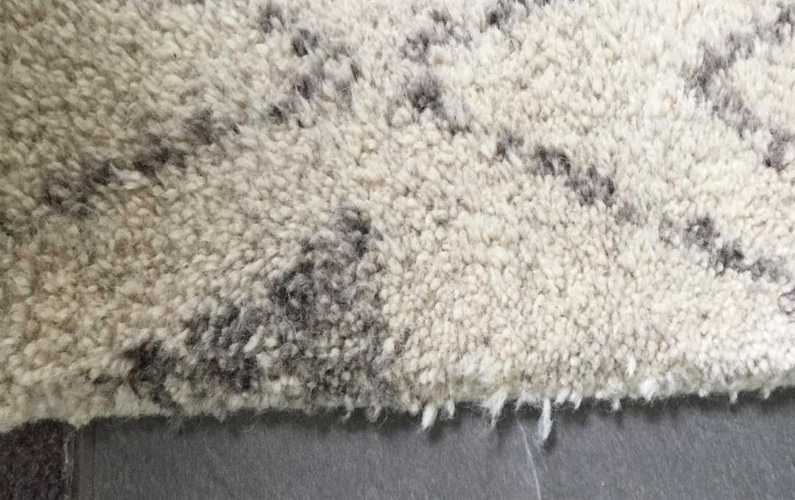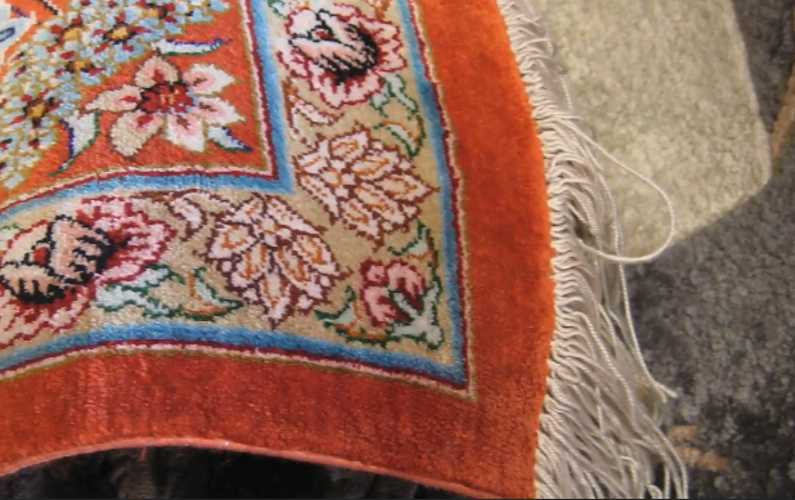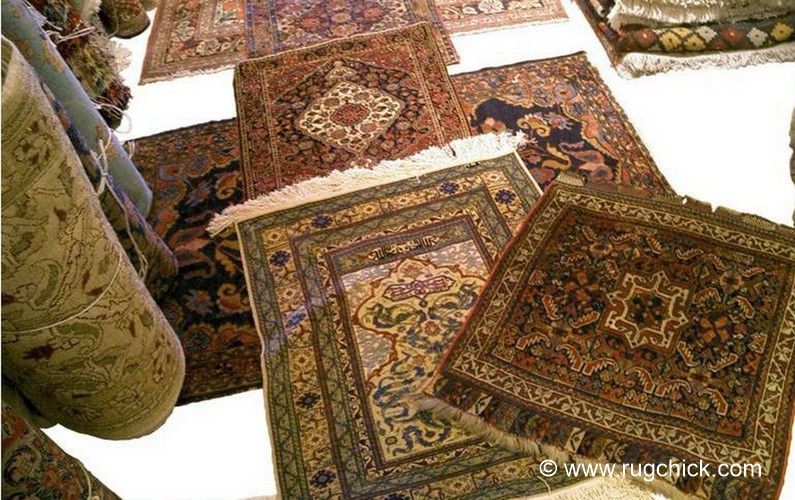Don’t water the rugs!
If you have plants anywhere near your rugs in your home – or if you are a rug cleaner and see plants near rugs you are picking up to clean – you want to watch out for this particular problem that often is not discovered until it’s too late.
Even the most careful person spills at times. Either spraying the leaves, or putting water in the planter, there are spills. Small ones over time.
There is also condensation around the bottom of the planter, especially if it’s heavy and is not moved often.
The rugs may feel dry to the touch…
…but you don’t know what’s happening INSIDE the rug.
Those fringe tassels you see on your woven rug are the foundation warps of that piece. One strand runs all the way through the middle to the opposite side of the rug, and the wool (or silk) fuzzy knots are wrapped around those warps.
Here’s a rug cut open to show you the white warps inside – which on most woven rugs today the warps and wefts are COTTON.

Thick cotton warps with wool fibers twisted around them.
Cotton is absorbant.
This means with a spill on a wool rug (or silk), you can blot the area with a towel to “wipe up the spill” and a little moisture has already likely seeped down into those inside cotton fibers, and have made them damp.
You won’t be able to “feel” if the inside of the rug is dry. Only a moisture probe can poke inside and tell you that.
Every rug cleaning professional has moisture probes handy to make sure every rug is 100% dry before it is put on the “ready” shelf or placed in storage, because moisture can lead to mildew growth like this:
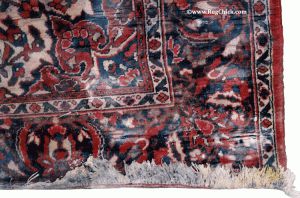
Mold damage on rug corner under a potted plant.
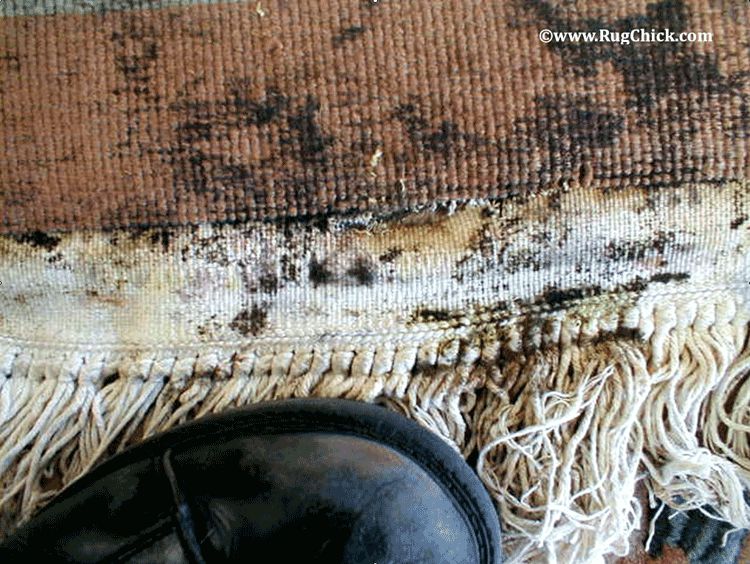
Mildew damage more visible on back side of rug near planter.
The problem with long-term moisture on cotton foundation fibers is that they begin to rot. And when dry rot sets in, the fibers literally fall apart.
If you are not careful when you move a rug that has water damage from a planter, you could literally create a hole in the damaged area. It will fall apart in your hands.
Potted plants are not the only source of moisture that can create damage secretly to your rugs. Other sources are water coolers, condensation from HVAC units, any leaks from a home that may affect walls or floors, and of course – pets. (Though pets have the added damage-causing element of creating stains that cannot be removed, added odors, and contamination from the waste – that’s why you need to clean up pet puddles right away.)
Help reduce the risks by keeping the house plants away from the rugs. When spills do happen, clean them up right away AND elevate the rug longer than you feel you should, just to make sure the INSIDE of the rug is truly dry. (I’ve used a hair dryer on warm to dry a spill from the back side of the rug just to make sure it was completely dry. Warm air helps the evaporation process.)
You may be super careful with your plant watering process, but not everyone in your home may have your same care. And you cannot keep the condensation from having a long term risk to your oriental rugs.
If you are worried about possible moisture risks, then flip your rugs over and see if you have any areas of concern. Cotton fibers experiencing mildew activity and dry rot will feel stiffer than the rest of the rug when you handle it. And because the foundation fibers are often white cotton, unless there are other colors being used in the wefts, you can often see when there is mildew activity due to discoloration visible on close inspection.
You also will often see dye migration visible from the back side as well, because even colorfast rugs when exposed over a long period to moisture, can bleed in those affected areas. You will see the signs if there is a problem – and if there IS a problem, make sure to stop the source of the water exposure, and handle that rug with extra care.
Dry rot damage is not reversible. Take care to make sure your rugs do not experience it.
– Lisa
P.S. Thank you Rug Chick readers for another wonderful year! I hope you and your families have an amazing 2011.

